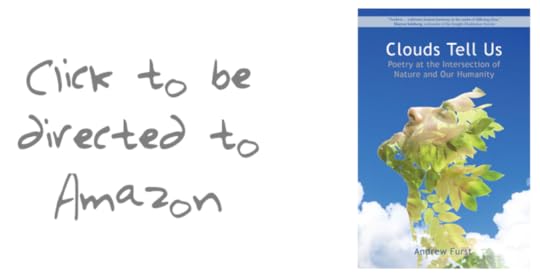Andrew Furst's Blog, page 52
July 19, 2016
Making a Waterfall Meditation Video – Audio & Video Editors
This is the third of several articles on the topic of making waterfall meditations. I’ve been traveling around New England for several years now shooting video of waterfalls for my meditation series.
In my previous articles I talked about finding the waterfalls and the photo equipment I use. This article talks about the audio and video editors I use. Since this is something I offer free on my website, I limit myself, mostly, to free tools. Surprisingly, the free tools are quite good. I’ve never felt the need to look elsewhere.
Video Editor
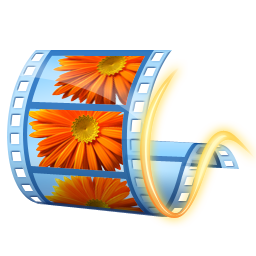 Windows Movie Maker – free, easy to use video editing software that allows you to merge video and audio, set animations and effects, titles,captions, and credits. Microsoft even offers a fairly decent help page providing instructions on using the software here. I use these features and not much more
Windows Movie Maker – free, easy to use video editing software that allows you to merge video and audio, set animations and effects, titles,captions, and credits. Microsoft even offers a fairly decent help page providing instructions on using the software here. I use these features and not much moreImport existing video files, pictures, and audio – currently, I like to import clips and trim them to 15 seconds. I transition between normal speed and slow motion.
Trim, rearrange, and copy imported audio and video clips – Windows Movie Maker has a very intuitive drag and drop interface for rearranging video, text, and audio. One thing that is tricky is managing the text when you rearrange the order of videos. Save adding the text for last to avoid this trouble.
Add transitions and effects to a project – Each frame fades in and out from black. Sometimes I’ll I’ll use the Black and White effect to transition between color and B&W clips. Recently I’ve started playing with some of the pan and zoom features. On rare occasions, when I’m feeling artsy, I’ll use the posterize or threshold effects.
Add movie titles and credits to a project – The title and soundtrack clips are white text on a black background (the default). I also use captions for when I add a poem to the meditation. My favorite font is bohemian typewriter.
Make sure to use the duration parameter for the text. Allow enough time for the viewer to read the text, but don’t let it linger too long. I typically keep text short enough to read in 4 second intervals.
Publish your movie to share in different ways – I don’t use this feature directly, I always export an mp4 at the highest quality (for high definition display) and post to YouTube via their load interface. This allows me to title and tag the video.
Audio Editor
 Audacity – Audacity is a free, easy-to-use, multi-track audio editor and recorder for Windows, Mac OS X, GNU/Linux and other operating systems. The interface is translated into many languages.
Audacity – Audacity is a free, easy-to-use, multi-track audio editor and recorder for Windows, Mac OS X, GNU/Linux and other operating systems. The interface is translated into many languages.I tend to underutilize audacity because my audio mixes are very minimal. I use it to:
Extend existing tracks – a simple effect – especially when I use multiple video shots to compose a meditation. To keep the audio uniform, I export the sound from the best audio clip from Windows Media Player, import the track into audacity, select effects|repeat, enter the number of times I want to repeat, and viola.
When using a separate audio track, make sure you turn off the sound for each of your video clips to prevent overlap. You can just drag and drop the mp3 into movie maker workspace on the right. I usually set the fade in and fade out parameters on the Music Tools tab to “slow” to give a nice easy transition in and out of the audio track.
Mix two tracks – I’ll often add tracks of a singing bell to the waterfall audio to add a meditative feel. The trick is to add them at the right interval. I also tend to trim down the singing bell tracks to fade in and out, otherwise a single ring will last the full video (typically 1 to 2 minutes).
Apply effects – I use a very short list of effects –
repeat,
noise removal (very handy).
fade in, fade out,
cross fade in, cross fade out,
equalization,
Export to mp3.
Other Articles
This is the third of several articles on making waterfall meditation videos. Stay tuned for more
Finding Waterfalls
Photo Equipment
Soundtrack Music

The post Making a Waterfall Meditation Video – Audio & Video Editors written by Andrew Furst appeared on Andrew Furst.
July 18, 2016
The Cult of Science – Dialectic Two Step
Estimated reading time: 9 minute(s)
Comment: “It’s only been in recent years that scientists are realizing how screwed up their cult has become. Much of what scientists believe is based upon unprovable hypotheses.
There is a great deal of arrogance in the cult of science”
Response: I hear your frustration when it comes to arrogance and attitude. These are familiar human traits and people on both sides of the science-religion argument bring them to the table. It’s going to be tit for tat on this dimension as long as there are homo sapiens.
But you made an observation that I think is flawed:
“It’s only been in recent years that scientists are realizing how screwed up their cult has become. Much of what scientists believe is based upon unprovable hypotheses.”
I’ll use my objection to this statement to contrast the veracity of the institutions of science and religion. My objection is that you only give credit to science for recently realizing how screwed up it is. But the fact is, science recognizing its faults is its hallmark and has been for hundreds of years. Or to use your language – Science knows it’s screwed up, and it does something about it.
Science vs. Religion: Science knows it’s screwed up, and it does something about it.
Click To Tweet
This is why we don’t talk about Lamarckian heredity, bodily humors, or a flat earth. Here’s a link to a great list of superseded scientific theories. These theories were rejected because the hypothesis that science is based on – the scientific method – has proven, time and again to be effective in sorting out the truth.
Now consider the institutions of religion. Western traditions all contain the doctrine of apostasy or heresy, mechanisms to prevent correction and change. It is also true that religious institutions have either stubbornly denied what science has demonstrated, or slowly capitulated to the facts. While I acknowledge that on both sides, people have exhibited arrogance, pettiness, and cruelty towards each other, stating that “what scientists believe is based upon unprovable hypotheses” seems pretty untenable. We live in a society that has used this hypothesis to accelerate its understanding of nature to the benefit of millions. Medicine, engineering, and other sciences have taken crooked and often dead end roads, but they have self-corrected based on data and reproducibility.
For those on the science side of the debate, there is a deep frustration with the rejection of science by people who directly benefit from it. For those on the religion side of the debate, there feels like something is missing. Oddly the two sides could be a match made in heaven. Joining the power and accuracy of science to spiritual seeking is actually logical. For such a pairing to work, there requires a brutal honesty combined with relentless questioning. Science can offer the former, spiritual seekers, the latter.
But to be an honest spiritual seeker, there must be casualties. Bad hypothesis must cede to better ones. Theories or religious tenets that don’t lend themselves to verification and predictability must be set aside, while theoretical inadequacies and doubts can be the basis of new hypotheses and potential progress.
While history shows that science marches forth over generations, the process is slow and difficult for individuals. The exponential change that has accompanied science is a new condition for homo sapiens. But, I’m confident, we will adapt.
Dialectic Two-Step is an ongoing series of my thoughts on questions that come my way.
Wisdom lies neither in fixity nor in change, but in the dialectic between the two. - Octavio
Get Each Week's Dialectic Two Step In Your Email Box
If you enjoyed this post, please like and share.
The post The Cult of Science – Dialectic Two Step written by Andrew Furst appeared on Andrew Furst.
July 17, 2016
Dylan On Freedom – Quotes
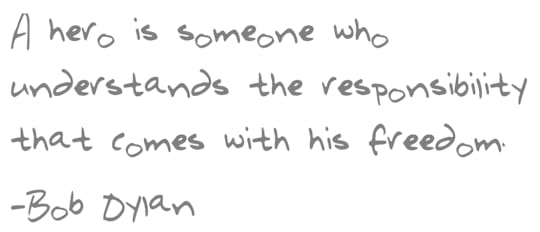
Quotes -The path to right view is an arduous walk through fields of manure.
Get Each Week's Quotes In Your Email Box
If you enjoyed this post, please like and share.
Freedom
The post Dylan On Freedom – Quotes written by Andrew Furst appeared on Andrew Furst.
July 16, 2016
Good and Evil – Say What?
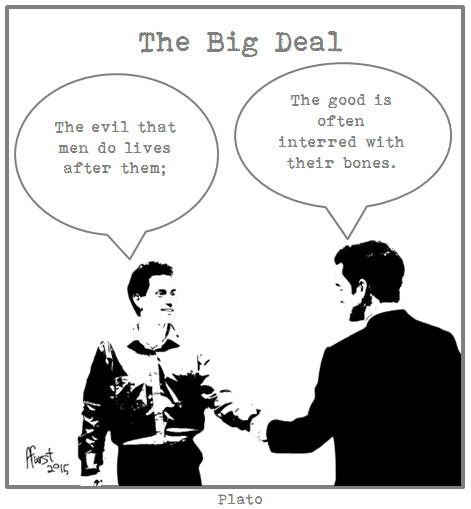
Say What? is an ongoing series of laconic exchanges on Buddhism in the format of a comic strip.
Get Each Week's "Say What?" Comic In Your Email Box
If you enjoyed this post, please like and share.
The post Good and Evil – Say What? written by Andrew Furst appeared on Andrew Furst.
July 15, 2016
Does Meditation Develop Intuition? – Modern Koans
Question: I practice zazen because I believe it develops the intuition. But my intuitions often turn out wrong. What is it that I am missing here?
My response: My sense is that like consciousness, intuition is a complex combination of experience (memory) and brain wiring. I don’t subscribe to any metaphysical explanations for it. I suspect as you gain more experience in life your “intuitions” about the world start to improve (though I bet they don’t bat any better than your average baseball player). If I’m right and it’s experiential, experiences don’t always lead us to a good gut feeling about how the world works, our intuitions will vary in their accuracy.
Say, for instance, I am the captain of a football team and I participate in a lot of coin tosses. I always choose heads and I’ve lost about 75% of those coin tosses. When I take my first course in statistics, the teacher will ask me “what is the probability that a coin will land heads?” I might intuitively respond 25%. But, the right answer is 50%.
Why did I get it wrong? There are probably lots of possible explanations. One might be that since I had amassed a decent amount of experience with coin tosses, I had gained enough confidence to intuit the answer. But because my experience was unusual, I got the wrong answer.
I see a number of reasons why zazen would be unhelpful for developing intuition.
Click To Tweet
Another explanation could be that my experience led me away from the more obvious answer to the question. The reason that the probability is 50% is because there are only two options. The probability of any event is 1 out of the total number of possible outcomes.
I see a number of reasons why zazen would be unhelpful for developing intuition.
First, the experience of zazen is primarily internal and therefore it excludes at least half of our possible experience. Introspection is not a broad enough data collection method. It’s also notoriously inaccurate.
Second, developing expectations of improved intuition or anything else for that matter, is the root of suffering, so it seems like something we’d want to avoid in the practice of meditation.
Third, I think that the idea of developing intuition is a little too fuzzy. Even if it were more tightly defined, I would still opt to wait patiently for some scientific confirmation that meditation might be able to improve it (whatever it is).
What do you think? Is there something called intuition? What is it? Can we improve it? Does it require a metaphysical definition? or is it just another cool feature of the human brain?
I'd love to hear your thoughts in the comments below.
Modern Koans is an ongoing series that recognizes that good questions are often more important then their answers.
The riddles of God are more satisfying than the solutions of man. ― G.K. Chesterton
Get Each Week's Modern Koans In Your Email Box
If you enjoyed this post, please like and share.
The post Does Meditation Develop Intuition? – Modern Koans written by Andrew Furst appeared on Andrew Furst.
July 14, 2016
First Review of Clouds Tell Us is Out – 4 Stars on Amazon
Ben Riggs, author of Finding God in the Body, director of the Refuge Meditation Group in Shreveport, LA, and contributor on Elephant Journal has penned the first review of Clouds Tell Us.
Of course the best way to get my books, artwork, and other goodies is to support my work on Patreon
where you can make
small monthly micro-contributions
that help support my work.
The post First Review of Clouds Tell Us is Out – 4 Stars on Amazon written by Andrew Furst appeared on Andrew Furst.
Are You Educated? – Quotes
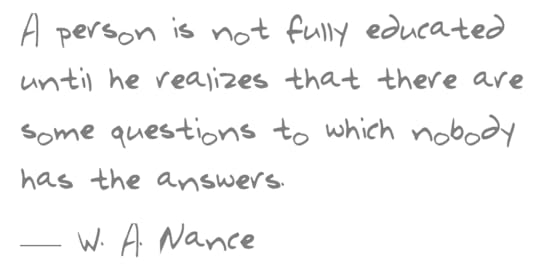
Quotes -The path to right view is an arduous walk through fields of manure.
Get Each Week's Quotes In Your Email Box
If you enjoyed this post, please like and share.
Are You Educated?
The post Are You Educated? – Quotes written by Andrew Furst appeared on Andrew Furst.
Swirling Bash Bish Brook – A Two Minute Meditation
Karma, like stones in the river
bend action
towards the familiar
Coursing the flow
into eddies and falls
But knowing
the ocean awaits
we’re afforded a breath
and a pause
to take in the singular beauty
of the camber
If you enjoyed this post, please like and share.
Minute Meditations is an ongoing series of short videos, poems, and commentary intended as a meditation. Offered as an opportunity to step back from your cyber routine and settle into a more natural rhythm, if only for a minute.
Get Each Week's Minute Meditations In Your Email Box
These videos are produced for those of us who spend an inordinately large amount of time in the cyber-world. They are not a substitute for unplugging from your devices and taking a stroll near trees, water, or a patch of unkempt grass. Getting out into the world - touching, smelling, hearing, and seeing nature is the best way to reconnect with our prime purpose.
What is our prime purpose? We are feeling and sensing machines. We are the universe looking back on itself. We are witness to the wonders and dangers of living in this corner of the cosmos. We are the seekers looking for connection a little further beyond yesterday's borders and boundaries.
But sitting and staring at the screen robs us of the sustenance that we rely upon for wonder and sanity. These videos are an opportunity to bring the sensations of nature to you, while you're in the cyber-world. Its an opportunity to relax your gaze, resettle your posture, and regain some depth in your breath. Listen and watch the video and allow your self to open up and recharge.
The post Swirling Bash Bish Brook – A Two Minute Meditation written by Andrew Furst appeared on Andrew Furst.
July 13, 2016
Eyes to the Skies – Tiny Drops (Photography)
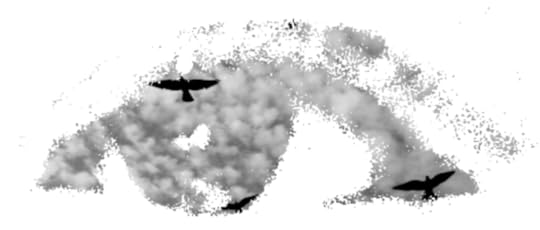
Get Each Week's Tiny Drops In Your Email Box
All Tiny Drop photos Attribution-NonCommercial-ShareAlike 4.0 International (CC BY-NC-SA 4.0)
If you enjoyed this post, please like and share.
The post Eyes to the Skies – Tiny Drops (Photography) written by Andrew Furst appeared on Andrew Furst.
July 12, 2016
Making a Waterfall Meditation Video – Photo Equipment
This is the second in a series of articles on making waterfall meditation videos. I’ve been traveling around New England for several years now shooting video of waterfalls for my meditation series. This article discusses the photo equipment I use. You’ll note it’s not super high tech. I’ve been using my iPhone since day one and I’ve only added a few items here and there. It’s important to be minimalist when you have to lug stuff on the trail.
While I sometimes upgrade my equipment (I added the olloclip lenses last year), I’ve been working with the mostly the same tools. All the equipment and resources I use are listed here:
Photo Equipment
iPhone 6 Plus – Camera, video (including the slow motion and time-lapse features) and iMovie (for processing the slow motion videos so they’re viewable on the PC.
olloclip TELEPHOTO + CPL LENS – I use the telephoto lens quite extensively. Especially on the slow motion shots. On many of the larger falls it’s difficult to get real close, this simple 2X lens really makes a difference.
olloclip 4-IN-1 LENS – I don’t use this one for waterfall shots, so if that’s all you’re interested in, skip this. But it has proven useful for very close up shots (e.g. raindrops) and when I gather vernal pond water samples and use the iPhone microscope that I built myself from these instructions. I’ve been able to shoot water mites and insect larvae to nice effect with this set up.
Polaroid 72-inch Photo / Video ProPod Tripod – I go through tripods pretty frequently (2-3 per year) so I stick with inexpensive ones. The latest Polaroid has held its own with some help from a paperclip for a good 6 months.
Here are some tips and pointers that I’ve learned and put to good use in filming the meditation series:
Use a tripod for all video .
Shoot the same scene a few times from different angles and distances.
Use slow motion with a zoom lens. It creates higher quality images (higher frame rate) and gives you the detail beautifully.
Composition is important taking a few shots versus one always pays off
Don’t worry too much about the background noise. If it’s natural and relaxing, great. If not, you can add a sound track or use audacity to edit the sound. This is especially true when you’re near a road, a shooting range, or planes frequently fly overhead. This is a great opportunity to learn the fine art of letting go.
Other Columns
This is the second of several articles on the topic of Waterfall Meditations. Stay tuned for more
Finding Waterfalls
Audio & Video Editors
Soundtrack Music
The post Making a Waterfall Meditation Video – Photo Equipment written by Andrew Furst appeared on Andrew Furst.


